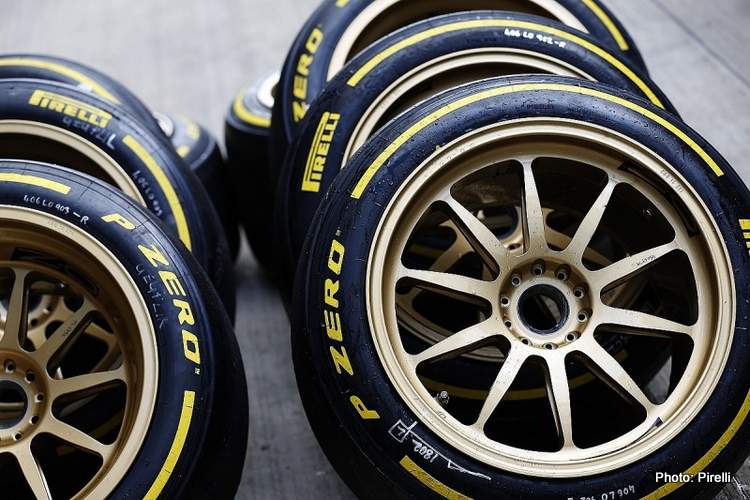F1: Mario Isola gives update on 18″-wheel tire test at Abu Dhabi
Two days of post-season testing have concluded in Abu Dhabi, in dry conditions with ambient temperatures that ranged from 18 to 32 degrees, and track temperatures varying from 20 to 42 degrees. (See podcast at bottom).
Using ‘mule cars’, teams had the chance to try out all five of the 2022 18-inch slick compounds that will be used from the start of next season. The fastest driver over the two days was Lando Norris (McLaren) who set a time of 1m25.809 on the second day.
At the same time as trying out the 2022 tires, there was also a one-day young driver test with the current 2021 13-inch tires. Fastest of the young drivers was Nyck De Vries for Mercedes, with a time of 1m23.194s set on Tuesday.
In accordance with the prescriptions, drivers ran with 17.5 psi of tire pressure at the back and 21.5 psi at the front – which was subsequently reduced to 20.0 psi on the second day.
The temperatures of the tire warmers were also adapted to those that will be used next year: 70 degrees centigrade for both the front and the rear. Up to now, tire blanket temperatures have been 100 degrees for the front and 80 degrees for the rear.
MARIO ISOLA – HEAD OF F1 AND CAR RACING
“We’re pleased with how these two days of testing went, and with the behavior of the new 18-inch tire in general. Today marked the final chapter in a development story that started back in 2019, leading to a completely new range of tires and compounds for 2022. We saw some graining during the first day on the front tires that led to a bit of understeer: especially with the softer compounds, which were run most often as they were best suited to this track. After analyzing the data from day one, we saw it was possible to reduce the front tire pressure by 1.5 psi, which improved the situation – particularly for the C3 compound.
But we need to keep in mind that mule cars were used and that the goal of this test was to allow the teams a chance to gather data to analyze over the winter. We’ll only get a true picture at the start of next year, when the teams will be able to test these tires with 2022 cars, which will have completely different aerodynamics, different brakes, and wheel rim covers as well.
According to the latest simulations from the teams, the new cars will be around five tenths of a second slower than the current cars: a gap that they will probably manage to overcome anyway by the end of next season.
Throughout the course of next year, we have 25 test days scheduled that will allow us to refine the tires, if necessary, for the following season. So now, all that’s left to do is wait to see the new 18-inch tires in action on the latest cars!”
